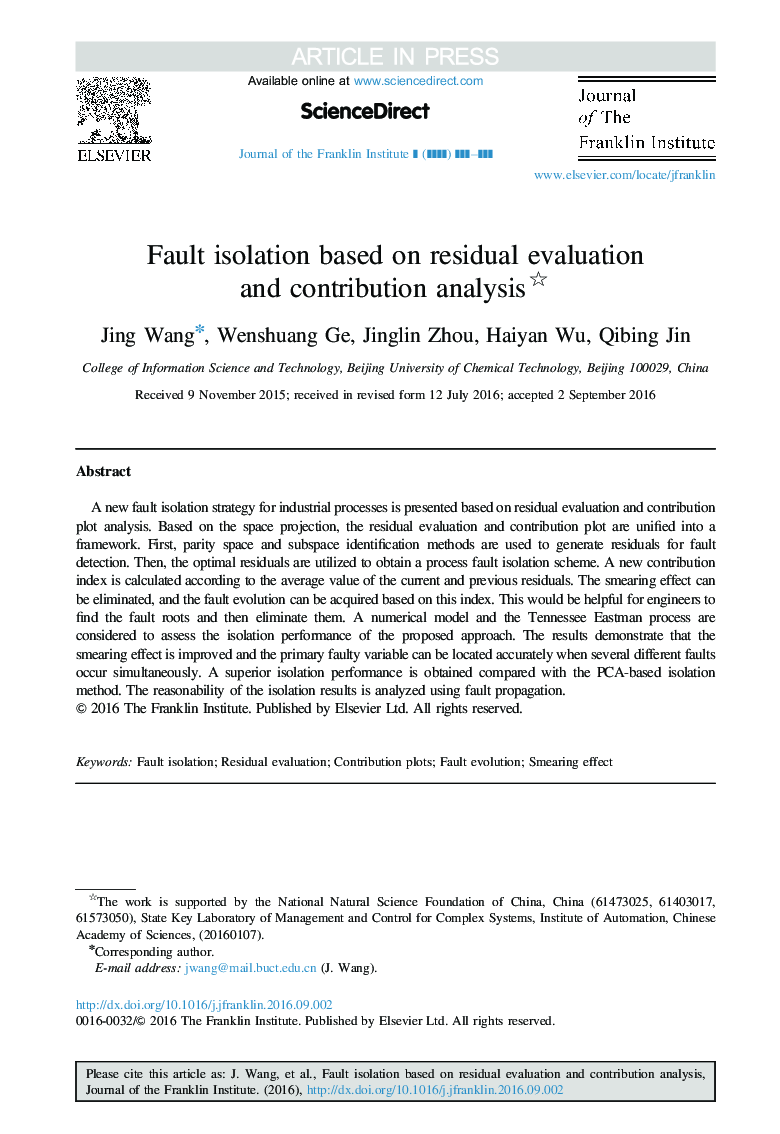| Article ID | Journal | Published Year | Pages | File Type |
|---|---|---|---|---|
| 4974388 | Journal of the Franklin Institute | 2017 | 22 Pages |
Abstract
A new fault isolation strategy for industrial processes is presented based on residual evaluation and contribution plot analysis. Based on the space projection, the residual evaluation and contribution plot are unified into a framework. First, parity space and subspace identification methods are used to generate residuals for fault detection. Then, the optimal residuals are utilized to obtain a process fault isolation scheme. A new contribution index is calculated according to the average value of the current and previous residuals. The smearing effect can be eliminated, and the fault evolution can be acquired based on this index. This would be helpful for engineers to find the fault roots and then eliminate them. A numerical model and the Tennessee Eastman process are considered to assess the isolation performance of the proposed approach. The results demonstrate that the smearing effect is improved and the primary faulty variable can be located accurately when several different faults occur simultaneously. A superior isolation performance is obtained compared with the PCA-based isolation method. The reasonability of the isolation results is analyzed using fault propagation.
Related Topics
Physical Sciences and Engineering
Computer Science
Signal Processing
Authors
Jing Wang, Wenshuang Ge, Jinglin Zhou, Haiyan Wu, Qibing Jin,
